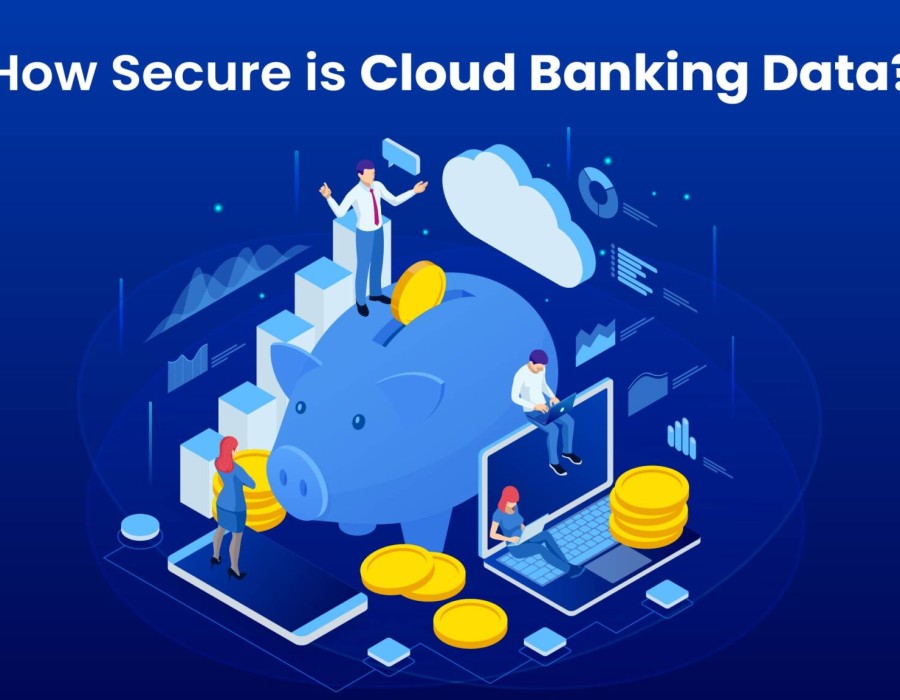In today's swiftly evolving landscape, traditional banking methods often struggle to meet the demands and expectations of customers. Lengthy wait times, intricate procedures, and limited accessibility have become prevalent issues, causing frustration and inconvenience. However, cloud banking emerges as a solution to tackle these challenges effectively. With cloud banking, customers can bid farewell to the hassles of long queues and paperwork, embracing a future where financial transactions are seamless, accessible, and hassle-free.
What is Cloud Banking?
Cloud banking entails the deployment and management of banking infrastructure in the cloud, enabling financial institutions to deliver essential services and conduct financial activities without the need for dedicated physical servers. Leveraging cloud computing technology, it facilitates data storage, access to advanced software programs, and the delivery of financial services online.
Applications of Cloud in Banking:
1. Data Storage and Processing:
Cloud banking revolutionizes data management by shifting from local systems to remote servers.
Centralized storage facilitates seamless access and real-time analysis, enabling insights and reporting.
Cloud-based solutions empower banks to efficiently manage the increasing volumes of digital data.
2. Customer Relationship Management (CRM) and Enterprise Resource Planning (ERP):
Cloud computing provides access to CRM and ERP applications, enhancing client relations and internal operations.
Personalized interactions and streamlined data management enhance customer experiences.
Banks optimize processes, improving both customer satisfaction and operational efficiency.
3. Infrastructure and Application Development:
Cloud services expedite the development and deployment of tailored solutions, optimizing banking operations.
Scalability enables banks to adjust computing resources dynamically without the overhead of on-premises equipment.
4. Security and Disaster Recovery:
Cloud banking enhances security through encryption and compliance measures, ensuring data integrity and privacy.
Disaster recovery mechanisms provide data redundancy and resilience in adverse scenarios.
5. Collaboration and Innovation:
Cloud computing fosters collaboration among banks and platform providers, driving innovation and process enhancement.
It empowers financial institutions to swiftly adopt emerging technologies, delivering market-responsive products and services.
Security of Cloud Banking Data:
Key considerations regarding the security of cloud banking data include:
Encryption and Security Measures: Industry-standard encryption techniques safeguard data in storage and during transmission.
Compliance with Regulations: Cloud banking providers assist banks in adhering to industry-specific regulations and standards.
Shared Security Responsibility: Both service providers and clients share obligations for ensuring data security.
Audits and Certifications: Cloud providers undergo audits and attain certifications to validate compliance.
Continuous Monitoring and Incident Response: Cloud systems implement continuous monitoring and robust incident response mechanisms.
Hybrid Cloud Approach: Banks can opt for a hybrid cloud strategy to address security and privacy concerns.
Transition to Cloud Banking:
Traditional banks are unequivocally transitioning to cloud banking to leverage its benefits and opportunities.
Cloud banking enables banks to prioritize superior customer service, data security, and regulatory compliance.
Challenges in migration include costs, workload migration, and change management.
Future of Cloud Banking:
Cloud banking is poised to be the future paradigm in banking, driving digital transformation and enhancing customer experiences.
Despite challenges, cloud technology offers advantages like agility, scalability, cost efficiency, and enriched customer experiences.
The COVID-19 pandemic has accelerated the transition to digital banking capabilities and data security.
In summary, cloud banking is reshaping the banking industry by offering improved agility, scalability, cost efficiency, and enhanced customer experiences. While challenges exist, the imperative to adopt cloud technology is clear, particularly in light of the COVID-19 pandemic's emphasis on digital banking capabilities and data security.





Comments